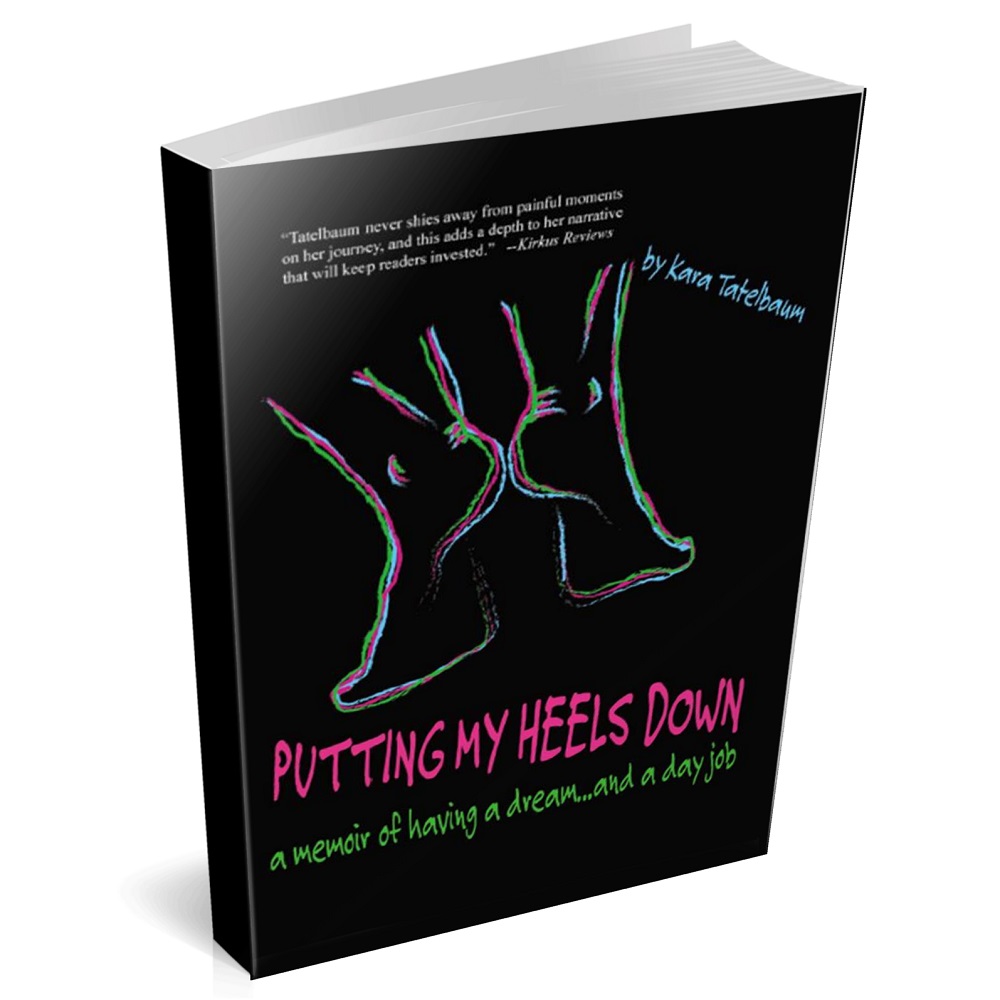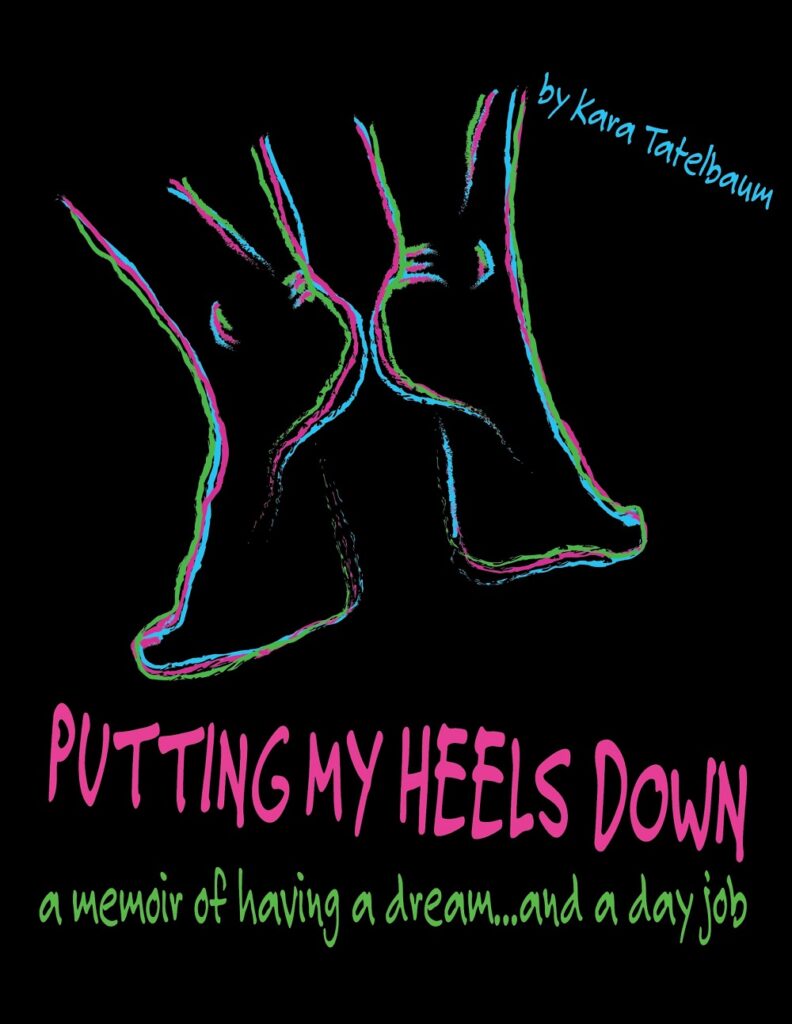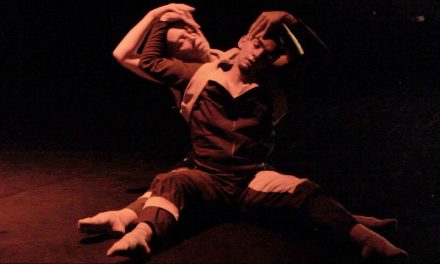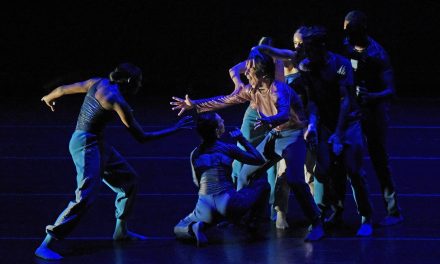As we move into a new year, many of us are looking to improve ourselves. Some are looking to realign identities as artists and creatives. Year-end reflections can occasionally be painful as we line up our successes, our challenges, and especially our outright failures. As dance artists, it can be complicated as those lines are not always clear. What does it mean to be successful as a dancer? In my interviews, studies, and personal experience, the answer to that question can be hard to define. Very few dancers achieve principal status in a full-time professional company and very few companies in the United States have 52-week contracts. Broadway shows are gigs, sometimes long-running, but they often close before you’ve completely moved into your dressing room. Smaller companies contract per show or season. A prestigious film, television show, or commercial is often only a few days or weeks of work. Most of us bounce from job to job, with a gigantic stack of 1099s at the end of the year detailing work as performers, educators, choreographers, assistants, and trainers. Embodying success in such a challenging industry can be difficult and the literal definition of the word can vary from person to person, from season to season, often from moment to moment. It takes a great deal of grit and fortitude to keep going.
Against this backdrop, and with these questions, I spent a wonderful hour with Kara Tatelbaum, the author of Putting My Heels Down, a brilliant, refreshingly candid, non-stuffy dance and self-discovery memoir. Ms.Tatelbaum’s journey as a dance artist, Pilates instructor, educator, and Resilience & Wellness coach is at once unique and absolutely relatable. I devoured the book in one sitting.
Even with her long list of job titles, Ms. Tatelbaum still fully identifies as a dancer. Throughout all of her hardships and career realignments, she never lost sight of her core identity. That clarity served her well and continues to help her find new and unique pathways forward. It is also part of what motivated her to put her story to paper.
Most of us don’t have a career that we necessarily feel like we made it. I have a lot of people who relate to my story in a way that maybe they don’t relate to Swan Dive. (Georgina Pazcoguin’s memoir of her life at NYCB) I had a dancer who I had been obsessed with. And actually, in my chapter where I talk about being at the barre, she’s the Paul Taylor dancer that I’m talking about. She read the book and reached out to me like, Oh my god, we’re going out to coffee! I relate to your book so much! And I’m like, YOU relate to my book? You were living the life that I wanted to live! And now I’m realizing, the people that did “make it,” maybe it’s different than what I thought.
This relatability is what makes the book so compelling and universal.
Most dance memoirs are NOT written by dancers that didn’t make it, whatever making it, you know, means to us. I had this conversation quite a few times going through the process of getting published. It was coming from the publisher side of “Who’s Kara Tatelbaum? She’s no Misty Copeland”.
She is not Misty (or Gelsey or Martha or Alvin) or any other instantly identifiable dancer, but her story and her journey are no less important. Each success that she had was followed by something akin to failure, but I find a deep resistance to using that word. Putting My Heels Down details the constant reassessment and recalibration that many dancers make as their bodies fail, luck runs out, or shows close. It is also a love story; Ms. Tatelbaum relies on the support and love of family, friends, her husband, and most importantly, herself, to return to dance over and over, eventually achieving a sense of contentment and acceptance.
It was not always so. Ms. Tatelbaum, like many dancers, started lessons very young. Some of her history reads like a warning label about ballet training and teachers. One of the most quoted passages from the book is attributed to her childhood teacher and lifelong mentor Miss Lorraine.
If your father practiced medicine the way you dance, he’d be under a million lawsuits.
While that sort of language makes the reader cringe, it is not the entire story. Miss Lorraine, though humanly flawed, remains a lifelong mentor. More devastating was the recurring theme that she did not have a dancer’s body. Her tendons were too short, her plié too shallow, and her hamstrings too tight. There was objective truth in these statements. Ms. Tatelbaum dealt with severe pain throughout her performing career. She had two hip surgeries before age 30 and numerous other injuries sprinkled throughout. Her second major career, as an incredibly popular albeit reluctant Pilates instructor, evolved from her dual need to heal and have a flexible day job.
There were many other moments in the book that illicit a similar visceral response; “Oh, that’s not really how we want to train dancers. Oh, that’s not how things should be done.” And yet, Ms. Tatelbaum shows gratitude and grace rather than bitterness. I asked her about that, her apparent lack of anger.
I think I did have anger, you know, when I wrote the book. But I don’t have anger about that now. I have perspective on it. And I wrote the book 10 years before it came out. I got an agent for my book in 2013.
The anger that she did have fueled her.
You know, when I was a little girl putting my legs out reaching my toes, I felt that pain and it wasn’t an achy pain. It was a stabby pain in my hamstring. I always had pain. And I would just suck it up. I had the anger that came with that pain. That fueled me.
So there were some rewrites and some of that newfound perspective shines through. The importance landed on telling the story.
All dancers’ stories matter. They are actually a part of dance history. Even if you are not the prima ballerina, you still have an essential role in the history of dance. Especially in our industry, where things are passed down; through apprenticeship, through teachers. We have such strong relationships with our teachers. That lineage is just so important. At every level, we are all a part of that. When you leave dance, or you transition, or you expand, that’s still your lineage, that’s still your family. That was something for me, you know, my very niche world of downtown New York City modern dance. People don’t know about this. So it was important to me that my book was accessible enough about dance that people would want to be interested in this niche world.
As the book, Ms. Tatelbaum’s personal recollection and her dance history progresses, the reader does see that in tandem with the hardships, she had a few aces up her sleeve. She has incredibly supportive parents. Unlike many young dancers, though she struggled in her school as a ballet dancer, her teacher still believed in and supported her. A modern teacher was brought in and she flourished. In another departure for female-identifying dancers, her choreographic voice was also encouraged. After a discouraging audition for Juilliard’s dance division, she was accepted into NYU/Tisch and earned her BFA as a University Honors Scholar, followed by an MFA in Choreography with a Teaching Assistantship from The Conservatory of Dance at SUNY Purchase. She became a fixture in the downtown NYC dance scene with her own company; independentdancemaker|Kara Tatelbaum, earning rave reviews in the New York Times. In what should have been a career-high, she was the first American sanctioned by the Chinese government to perform at the US Pavilion at the 2010 Shanghai Expo. (Read the book to find out what happened there! It did not go as planned!) Her eclectic career continues; as an author, an educator, and a coach. She leads an amazing life helping others while still finding time to go to that all-important ballet class.
One of the core characteristics that sets Ms. Tatelbaum apart from the multitude of other dancers who do not continue after their first or second major setback is resilience. A growing body of research has shown that resilience is a stronger indicator of success as an artist than any other factor. (For a deep academic dive into the subject, check out Creativity, Trauma, and Resilience, by Paula Thomson and S. Victoria Jaque.) Unlike talent or “the right body,” resilience can be taught. It is an augmentable skill rather than an innate ability. Recognizing the value of resilience is what led Ms. Tatelbaum to the most recent iteration of her career as a certified resilience and wellness coach.
I’ve been obsessed with resilience, you know; What is resilience? How do we stay resilient? You know, what are the secrets here? And how do we figure this out?
She continues with a kind of life philosophy about where resilience and fortitude as dancers can take us.
I certainly had a very narrow idea of what it was to be a dancer. And now my message really is, for both my book and my coaching, dream bigger. Widening our dreams increases our chances of success. If we only have a dream of SAB and New York City Ballet, there is a very, very narrow chance that that opportunity is going to open up to you. But if we really widen our vision and look at the why. Why do we dance? Who do we dance for? Who do we want our audience to be? Maybe if you want to dance with City Ballet, it’s because you want to be making money. Because I mean, they do make money (compared to other dancers) So you make a little money, travel, and dance in one of the top companies in the world. But, you know what? You could tour with Beyonce! Have an even bigger paycheck and an even bigger arena! And still dance! It’s just dreaming bigger and widening our vision of ourselves.

3D photo of “Putting My Heels Down” by Kara Tatelbaum with quote by Kirkus Reviews – Courtesy of the author.
Ms. Tatelbaum brings this vision to colleges, to workshops, and to her continuing Pilates classes. She also applies it to her own life daily.
The book closes as Ms. Tatelbaum contemplates her next move. She now lives with her husband and two kids, a reality that seventeen-year-old Kara would have never dreamt could happen. The twists and turns in her life AFTER the book ends are just as challenging, revelatory, and as worthy of exploration as the journey that led to writing it. (That will have to be a second book and article!)
I really love performing. I love being completely honest with my story, whether it’s physical or in the book. I love being in an audience and I love the exchange with as wide an audience as possible. And now here I am with this book. You know, I got to go to ADF over the summer. I was never invited to perform at ADF. (American Dance Festival). When I went with my book, Oh, My God. I sat with people in the audience who would never come and see my choreography. So it’s given me a much bigger platform than I would have dreamed up as a choreographer.
To learn more about Kara Tatelbaum and how to order “Putting My Heels Down”, please visit her website.
Written by Nancy Dobbs Owen for LA Dance Chronicle.
Featured image: Kara Tatelbaum – Photo on right Ms. Tatelbaum in “Grounded” – Photo by Steven Schreiber – Photo on left courtesy of the artist – Photo composition by LA Dance Chronicle.










